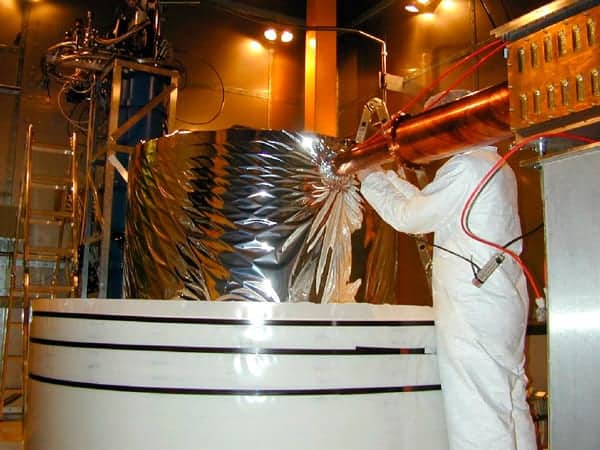
For weeks physicists have been speculating whether the CDMS-II collaboration based in the US has detected the first direct evidence for dark matter, one of the universe’s most mysterious entities. Now the evidence is out in the open – although it’s not quite a strong as some had hoped.
In a preprint submitted to the arXiv server yesterday, the CDMS-II team claim to have detected two “events” that are characteristic of dark-matter constituents known as weakly interacting massive particles, or WIMPs. However, they point out that there is a one-in-four chance that these events could be background noise.
“Scientists have a set criteria for determining whether a new discovery has been made, in essence that the ratio of signal-to-background events must be large enough that there is no reasonable doubt,” they write in a summary. “Typically there must be less than one chance in a thousand of the signal being due to background…so we can make no claim to have discovered WIMPs.”
Where are the WIMPs?
While invisible, dark matter is thought to make up some 85% of all gravitating mass in the universe. The most popular candidates for its makeup are WIMPs, hypothetical particles that could be heavier than atomic nuclei.
Located half a mile underground in a disused mine in Soudan, Minnesota, the CDMS-II experiment was designed to detect WIMPs using 30 detectors made of germanium and silicon cooled near to absolute zero. The hope was that, as the Earth sweeps through clumps of dark matter in our galaxy, these detectors would spot charges generated by occasional interactions between the germanium and silicon atoms and WIMPs. Although radioactive decays or cosmic rays could also produce signals, those of the right size and timing would be evidence of WIMPs.
CDMS-II’s first run starting in 2003 failed to find any evidence, but the same cannot be said of the latest run from 2007–2008. In this data set, which is roughly double the size of all previous sets, there are two events that fit a WIMP. The probability that these could be radioactive decays or cosmic rays is 23%.
Reactions are mixed in the particle physics community. “It is a tantalising hint of what might be,” says Alexander Murphy, a physicist at the University of Edinburgh, UK, who works on the ZEPLIN-III dark-matter experiment. “As a community we have been hearing rumours for weeks and this is almost unbearably exciting. If correct, then the next generation of experiments are destined for and perfectly placed to capitalize and make the true discovery, finally determining what the universe is made of, and we’ll even be able to start to tell some of the properties of the stuff.”
Mirko Boezio at Italy’s National Institute for Nuclear Physics told physicsworld.com, “As a detection of dark matter, while the two events are intriguing, I would be reluctant to interpret them as evidence for WIMP interactions.” Boezio, who is a member of the PAMELA collaboration that claimed indirect evidence for dark matter last year added, “The probability for [the events] to be background is too large for a significant claim.”



